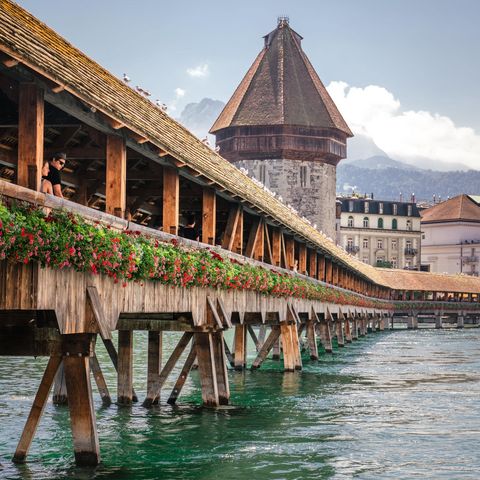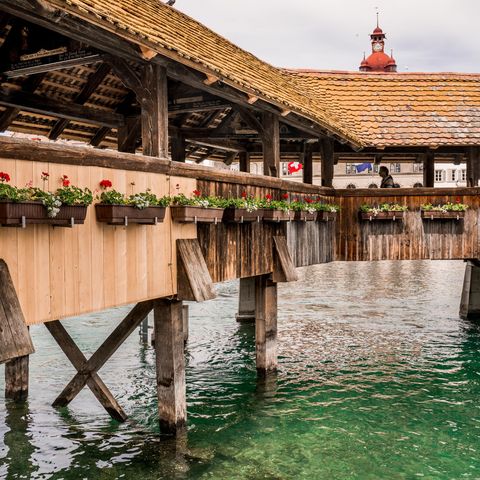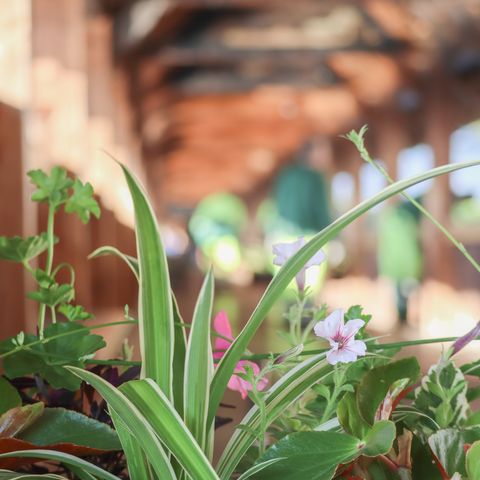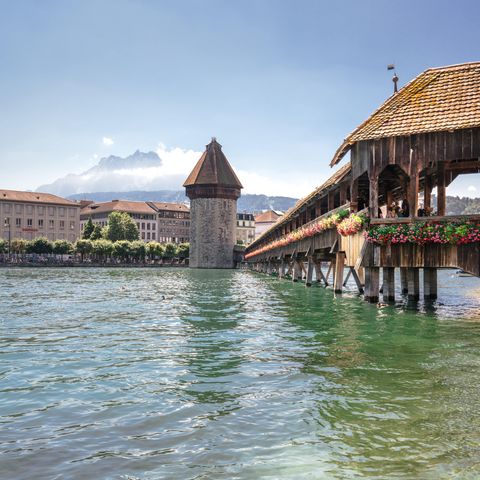The Chapel Bridge and its Water Tower
The number 1 photo subject
Not for nothing is the world-famous timber bridge Lucerne’s most photographed destination, it being held in high esteem by visitors and residents in equal measure. Together with the Water Tower, the bridge forms a landmark in the townscape like no other attraction.
The Chapel Bridge these days links the Lucerne Theatre on the south bank of the River Reuss with St. Peter’s Chapel on Rathausquai, passing the Water Tower on the way. The devastation that caught the world’s attention was one that no one would have wished to have happened.


![[Translate to Englisch:] CityCard Luzern CityCard Luzern](https://www.luzern.com/fileadmin/_processed_/b/b/csm_CityCard_LTAG_FK_831cca9d00.jpg)



![[Translate to Englisch:] Gästekarte Luzern Gästekarte Luzern](https://www.luzern.com/fileadmin/_processed_/6/4/csm_SGV_2017_aa603a6780.jpg)







